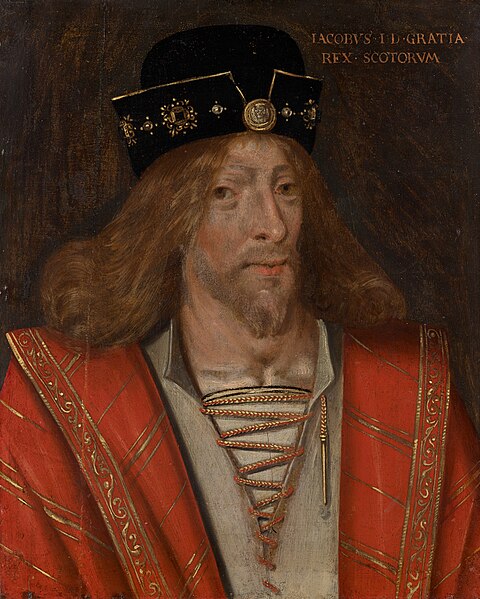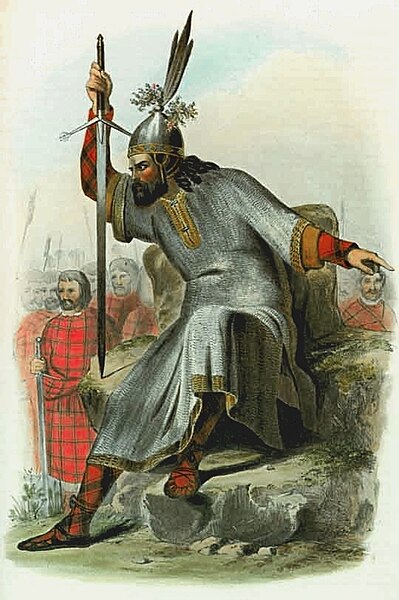Scotland in the late Middle Ages
Scotland in the late Middle Ages, between the deaths of Alexander III in 1286 and James IV in 1513, established its independence from England under figures including William Wallace in the late 13th century and Robert Bruce in the 14th century. In the 15th century under the Stewart Dynasty, despite a turbulent political history, the Crown gained greater political control at the expense of independent lords and regained most of its lost territory to approximately the modern borders of the country. However, the Auld Alliance with France led to the heavy defeat of a Scottish army at the Battle of Flodden in 1513 and the death of the king James IV, which would be followed by a long minority and a period of political instability.
John Balliol, his crown and sceptre symbolically broken as depicted in the 1562 Forman Armorial.
The statue near Stirling commemorating Robert I.
David II (right) and Edward III of England (left).
James I, who spent much of his life imprisoned in England.
John of Islay, Earl of Ross
John of Islay (1434–1503), Earl of Ross, fourth Lord of the Isles, and Mac Domhnaill, was a pivotal figure in late medieval Scotland: specifically in the struggle for power with James Stewart, James III of Scotland, in the remoter formerly Norse-dominated regions of the kingdom. His defeat in this conflict led to rebellion against John by his illegitimate son Angus Óg, resulting in the defeat of John's fleet at the Battle of Bloody Bay in the early 1480s. Thereafter and until his death in 1503 John remained an inconsequential figure while, until his murder in 1490, Angus continued to dominate the affairs of Clan Donald. In 1493 James IV brought the Lordship of the Isles to an end.
MacDonald, The Lord of the Isles – a romanticised Victorian illustrator's impression
James III of Scotland, whose power would ultimately eclipse that of the Lords of the Isles
Bloody Bay







